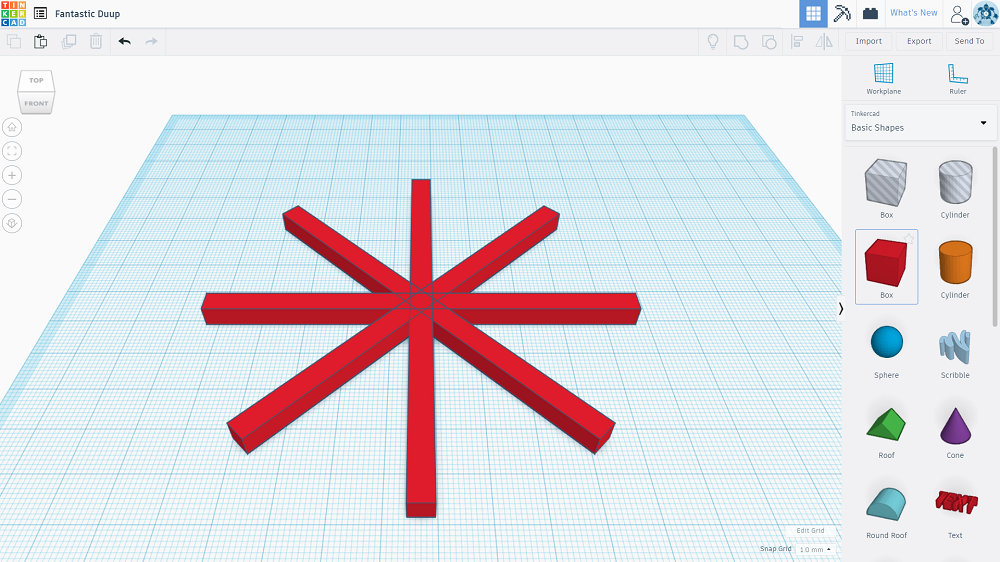Learn 3D printing by making holiday decorations

The 3D printing facilities in Harrell Health Sciences Library have expanded over the past year, as has the range of objects that the library can print.
Many of the items that the print service produces for patrons are medical or anatomical in nature, as physicians and researchers explore particular structures. Users can tap the combined expertise of the radiology department and the library to make visible to patients or students things like a pediatric heart defect or the game plan for repairing a bone fracture.
 However, the library’s 3D design and printing services are available to everyone and open up new avenues of creativity. Over the past year, the library has conducted a series of well-attended workshops to teach Tinkercad – Autodesk’s free web-based design program. In these classes, attendees have been taught how to make seasonal items.
However, the library’s 3D design and printing services are available to everyone and open up new avenues of creativity. Over the past year, the library has conducted a series of well-attended workshops to teach Tinkercad – Autodesk’s free web-based design program. In these classes, attendees have been taught how to make seasonal items.
Simple geometric shapes such as a star can take advantage of the built-in “Array” feature. When a Tinkercad user duplicates an object then moves it a certain distance or angle, if it is duplicated immediately after, the program not only duplicates the shape but also the action. So, for example, users can make an eight-pointed shape by duplicating and turning an object 45 degrees, then hitting the duplicate button again and again.
 The shapes in the Tinkercad library can be scaled, and grouped together to make new shapes. Shapes may also be turned into cutting shapes; thus, a star shape can become a star-shaped hole when grouped with a solid shape. Shapes not in the library can be created in Adobe Illustrator or the free open-source alternative Inkscape, and saved as SVG files, then imported into Tinkercad.
The shapes in the Tinkercad library can be scaled, and grouped together to make new shapes. Shapes may also be turned into cutting shapes; thus, a star shape can become a star-shaped hole when grouped with a solid shape. Shapes not in the library can be created in Adobe Illustrator or the free open-source alternative Inkscape, and saved as SVG files, then imported into Tinkercad.
The Tinkercad interface is simple to use. Objects have easy-to-see 3D manipulators, which can scale a shape to a desired size or move it through incremental angles and distances. Precise measurements can be typed in if exact dimensions are needed. At the end of the process, users can download their creations as STL files.
The Harrell Library has offered themed classes in creating simple decorative objects, with more classes scheduled. To sign up for any of the Tinkercad classes, visit the library’s website and calendar using the links below.
Read more
If you're having trouble accessing this content, or would like it in another format, please email the Penn State College of Medicine web department.
